Happy Norooz! (Or Nowruz, or Noruz, or Nowrooz)
What better way to introduce the world to Shireen & Savory than through the Persian New Year? March 20th this year marked the coming of spring – the vernal equinox. Iranians all over the world celebrate the new year (or “Norooz”, which actually translates to “new day”) on the first day of spring and throughout the ensuing weeks. When you think about it, isn’t that the best day to start the year? Instead of celebrating a new year smack dab in the middle of winter, Persians figured that it’s best to let the cold come to rest and start a new year with a new season. With spring comes new beginnings, flowers blossoming, and the sun shining for longer. I’ve always loved celebrating this occasion with my family. It’s a celestial holiday, not religious, and it places humanity, hope for the future, and the contemplation of time over all else.
The portrait of Persian New Year will always be the Sofreh Haft Seen, or “Seven S” spread. I’ve made my interpretation of the Sofreh Haft Seen this year and included all the fixin’s – mung beans, dried oleaster, you name it! Each item on the spread represents a different hope for the new year.
These are the original seven items. Through the millennia, additional items have made their way onto the Sofreh and have become tradition, despite not starting with the letter “S” (they’re the wild cards). I’m really hoping my alterations of chocolate pudding and dinosaur figurines make the books some day.
Original Haft Seen
1. “Sabzeh” – sprouted lentils and sprouted mung beans (my first time sprouting these on my own!), symbolizing rebirth
2. & 3. “Seer” – garlic, symbolizing medicine, and “seeb” – apples, symbolizing beauty
4. “Somaq” – sumac spice, symbolizing the sunrise & many new days
5. & 6. “Senjed” – dried oleaster fruit, symbolizing love, and “serkeh” – vinegar, symbolizing old age.
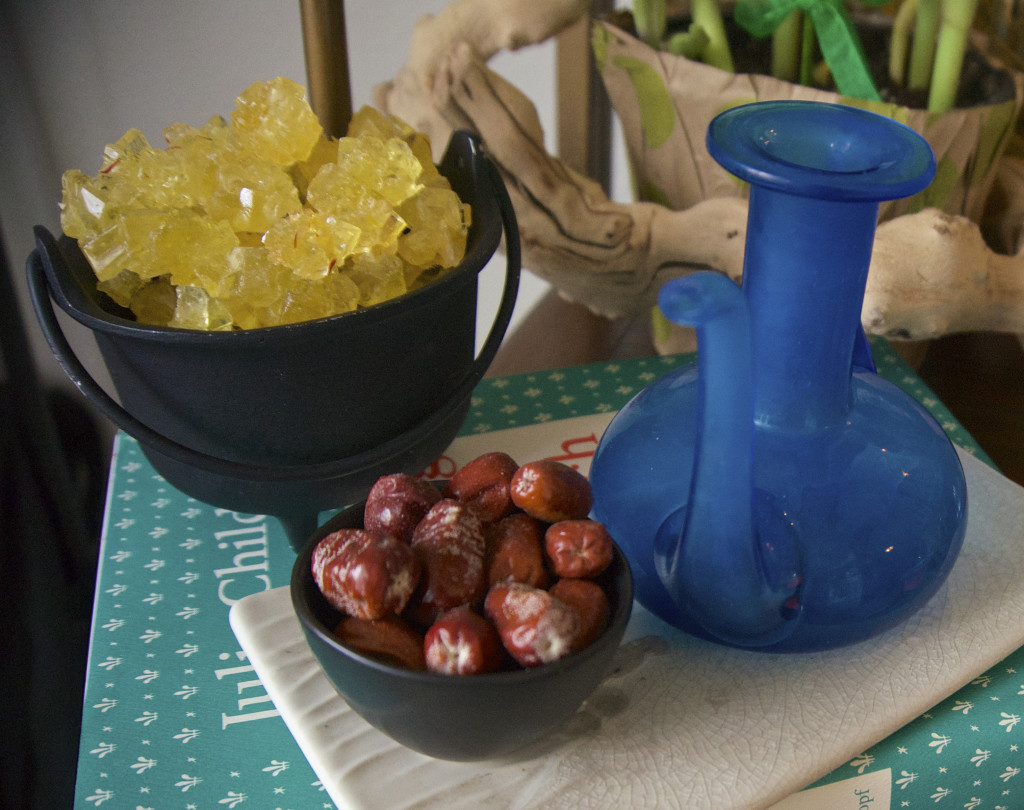
Senjed fruit and vinegar in a vintage glass from my mom. Plus, as a nod to St. Patrick’s day, golden saffron rock candy in a tiny iron pot!
7. “Samanu” – wheat germ pudding, symbolizing prosperity
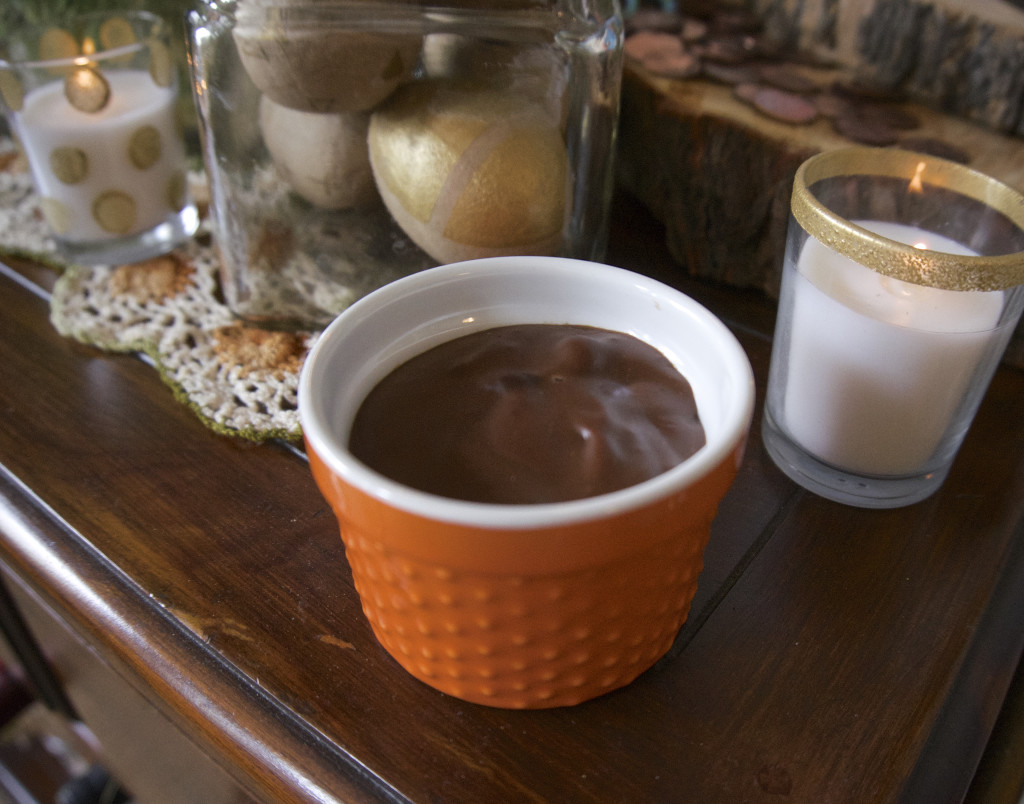
My little secret… I think samanu is kinda gross, so I put out chocolate pudding instead! They look exactly the same, only one’s way tastier.
The Wild Cards
“Ayeneh” – mirror, symbolizing reflection
“Sekkeh” – coins, symbolizing wealth in the upcoming year, and clay figures of animals to bear witness to the coming of life. (Yep, mine’s a plastic dinosaur.)
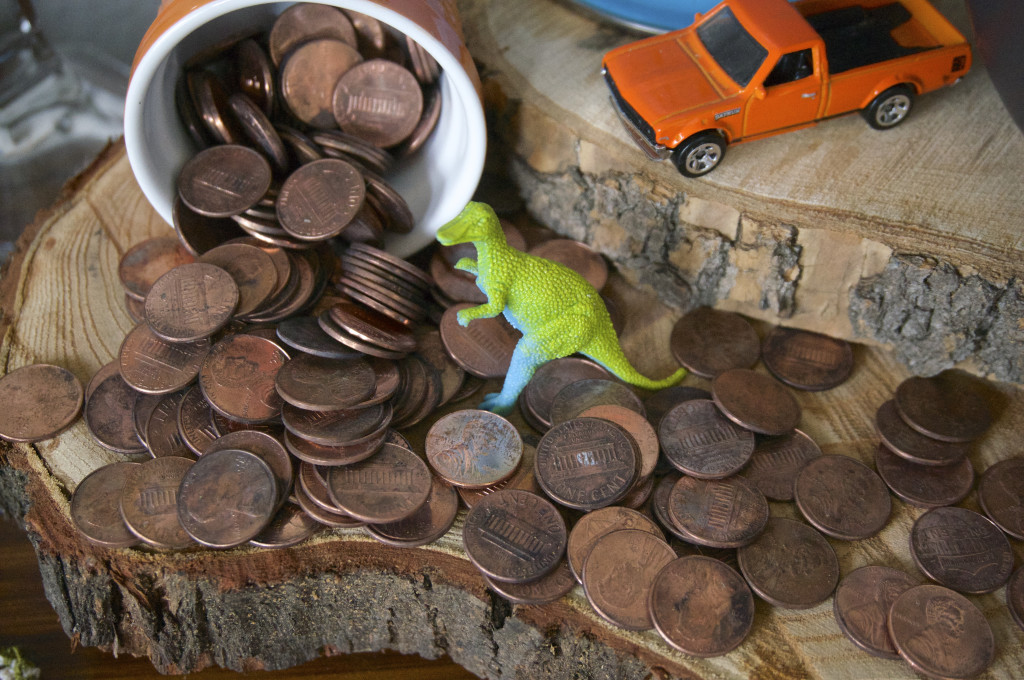
I tried (and failed) to shine these coins in vinegar. Apparently Pinterest is wrong about some things! Next year I’ll get brand new pennies from the bank.
“Mahi” – fish, symbolizing life
“Tokhm-e morg” – decorated eggs, symbolizing fertility
“Sham” – candles, symbolizing enlightenment, and typically people will light one for each member of the family
“Sombol” or “Laleh” – hyacinth or tulips, spring bulb flowers that come back to life every year
A holy book – this year, we have the Julia Child Bible on display; last year, it was the unabridged Hitchhiker’s Guide To The Galaxy series.
I wish you all prosperity, good health, and happiness in this coming year (1394, according to the Iranian calendar)! As you will come to see, Shireen & Savory will be my exploration into modern Persian & American cooking, and will also feature life tidbits like this one. Thank you so much for following along!

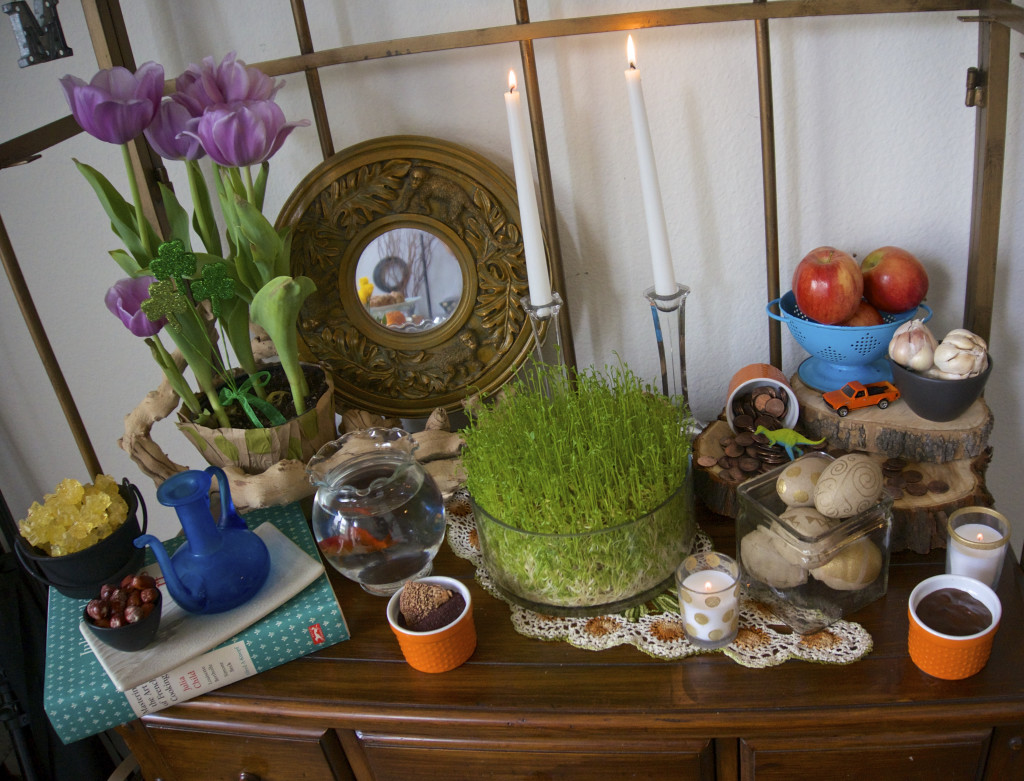
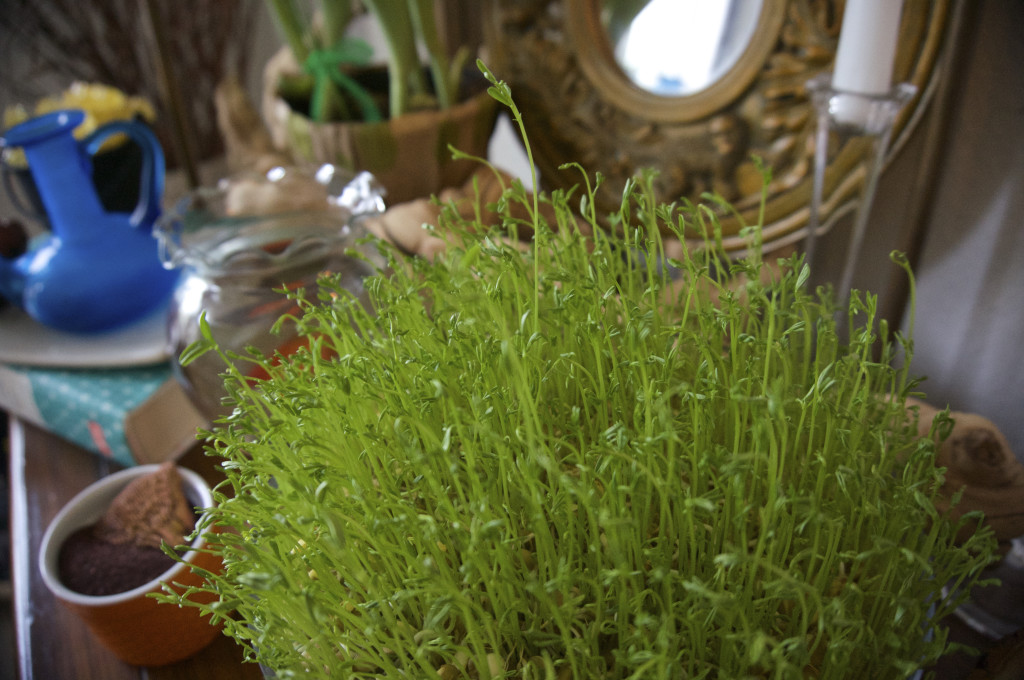
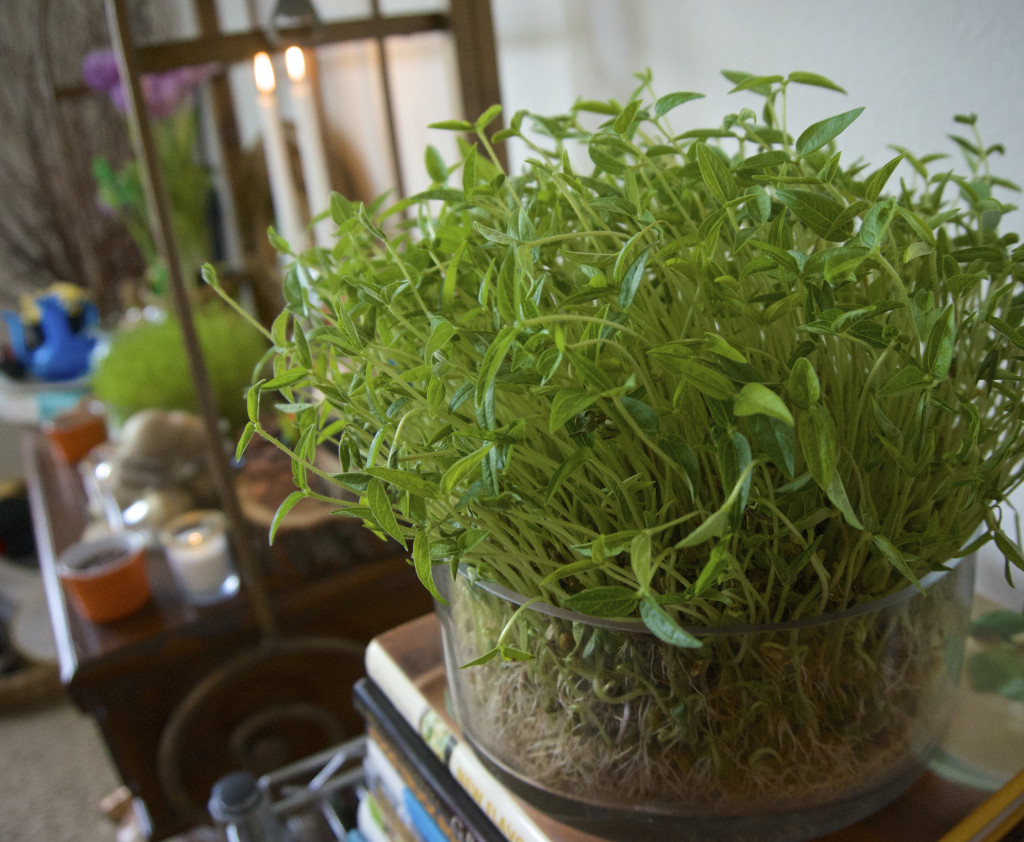
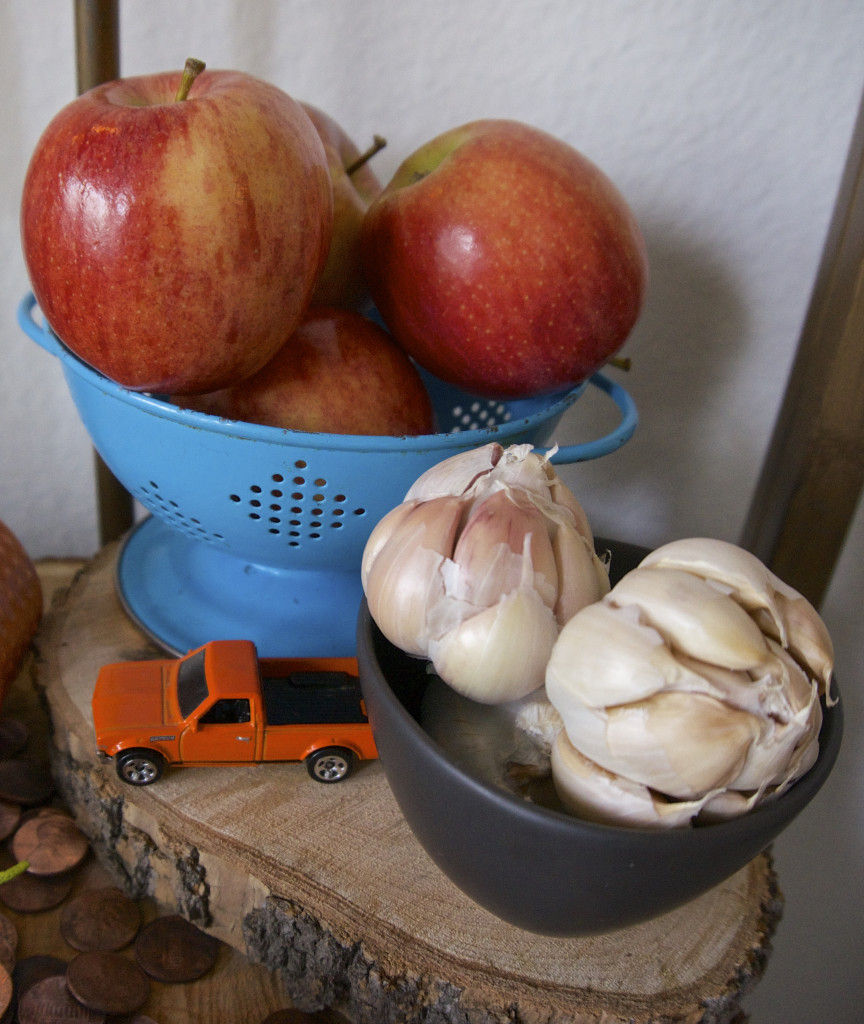
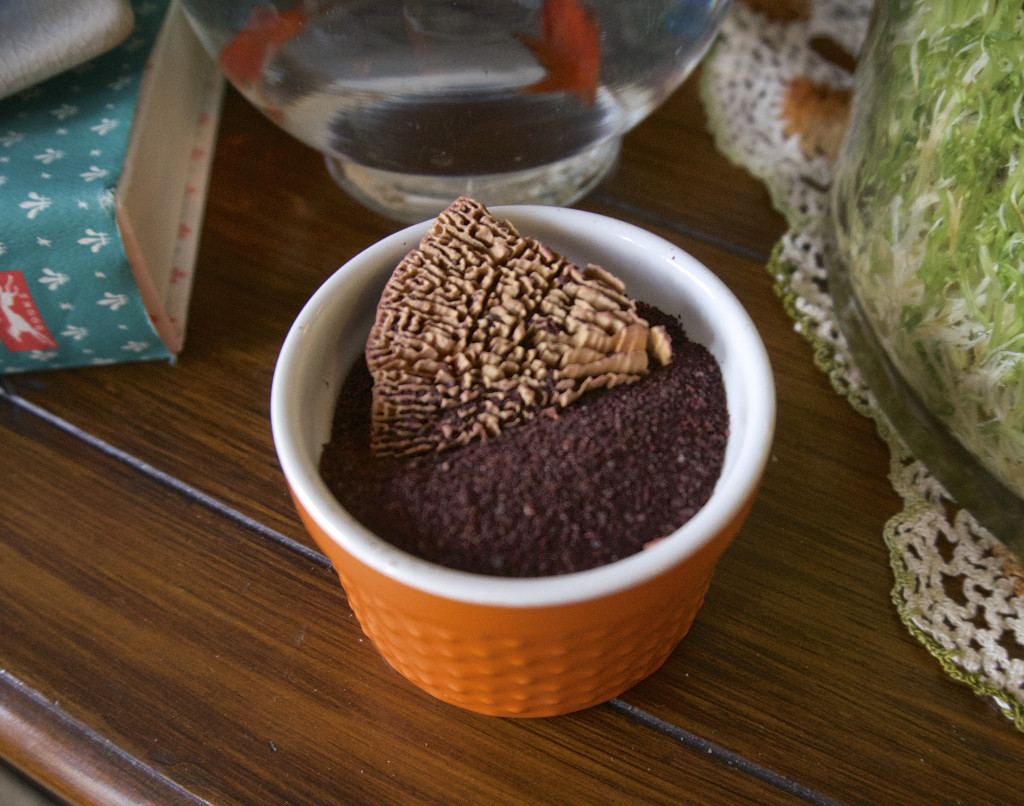
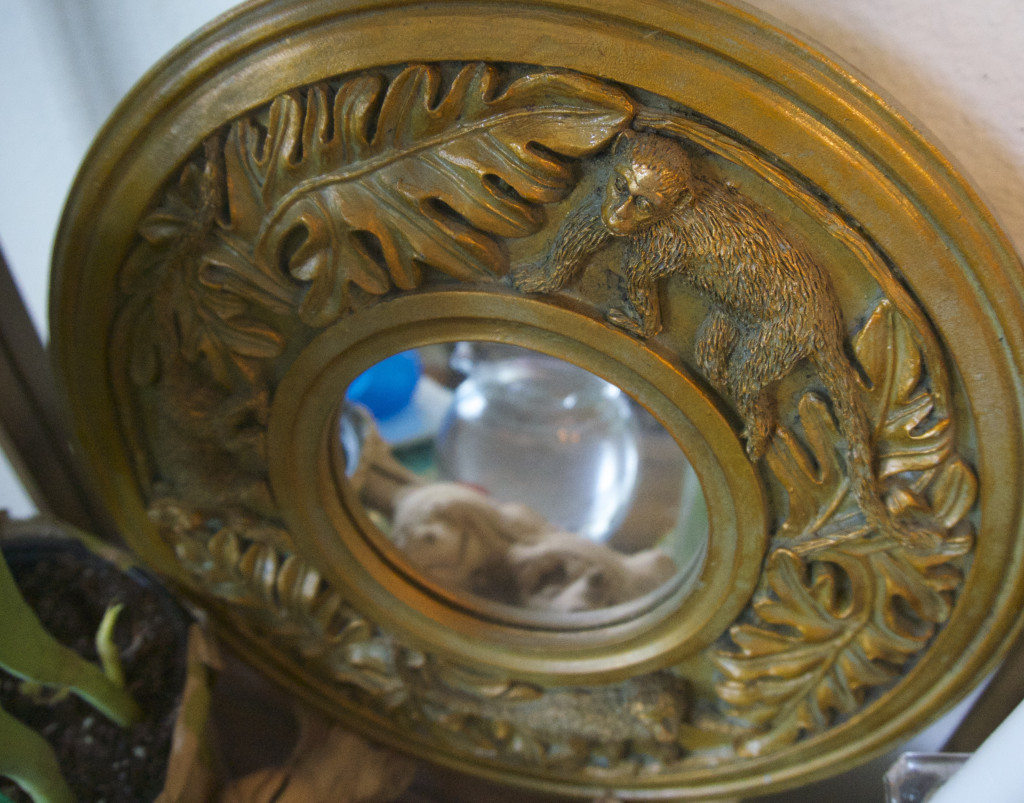
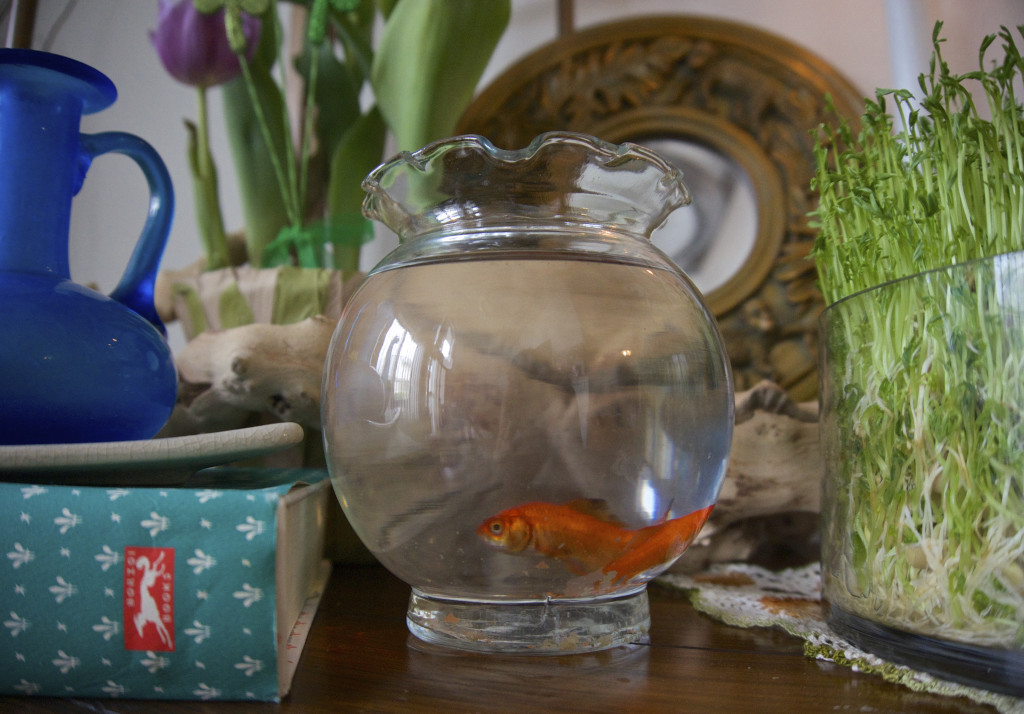
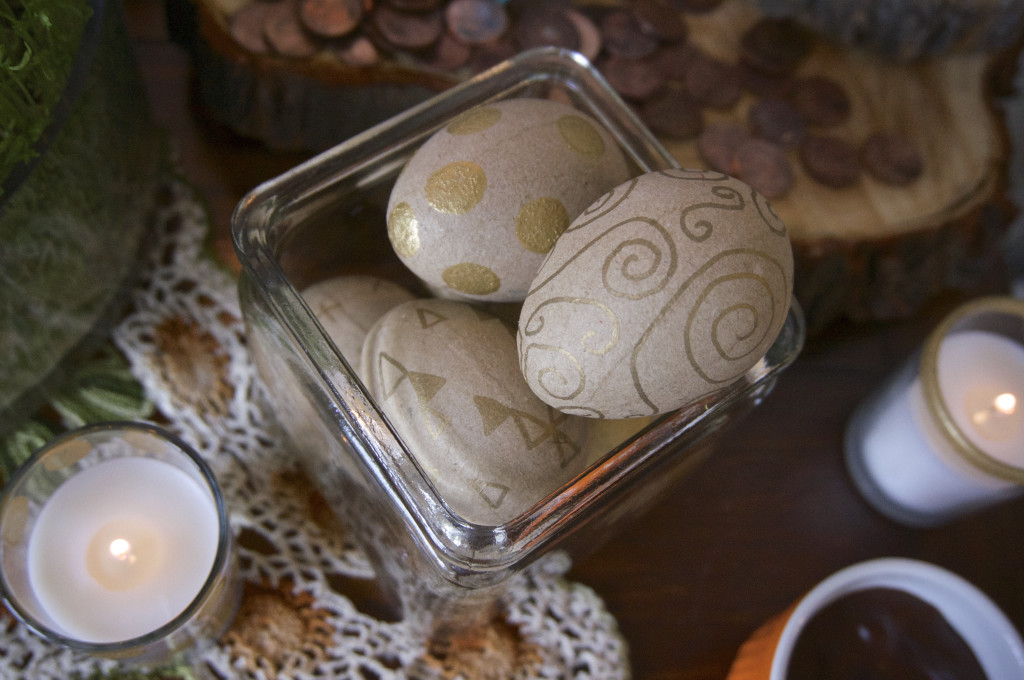
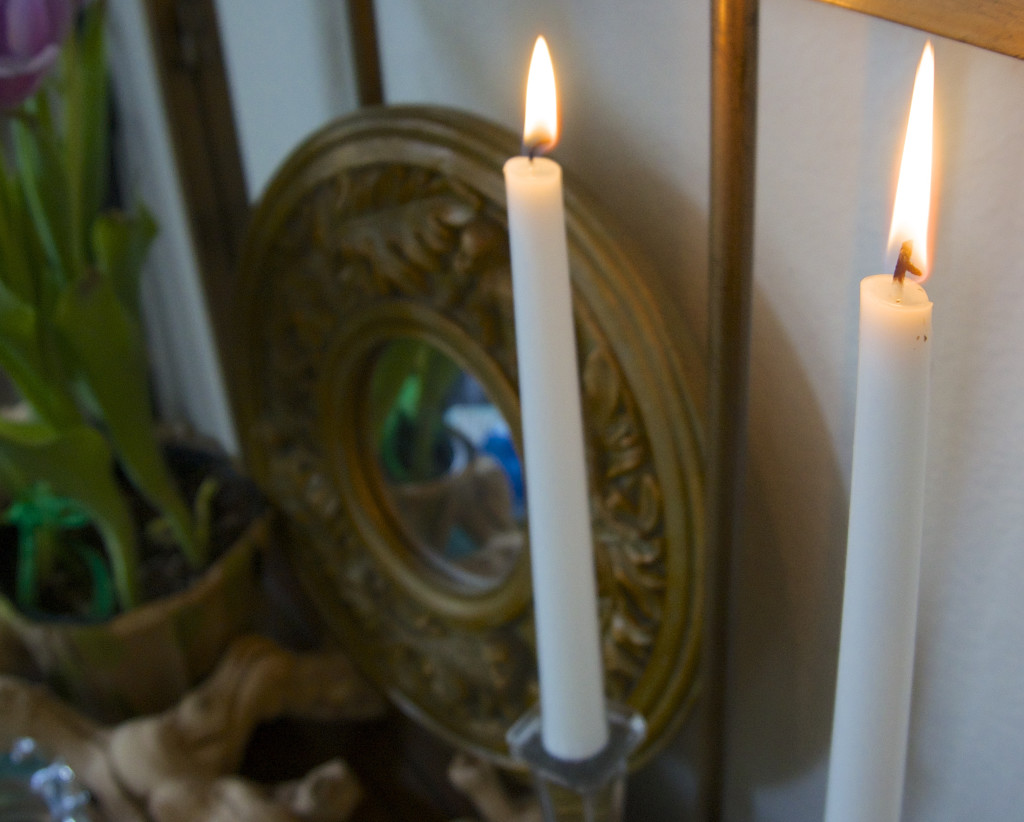
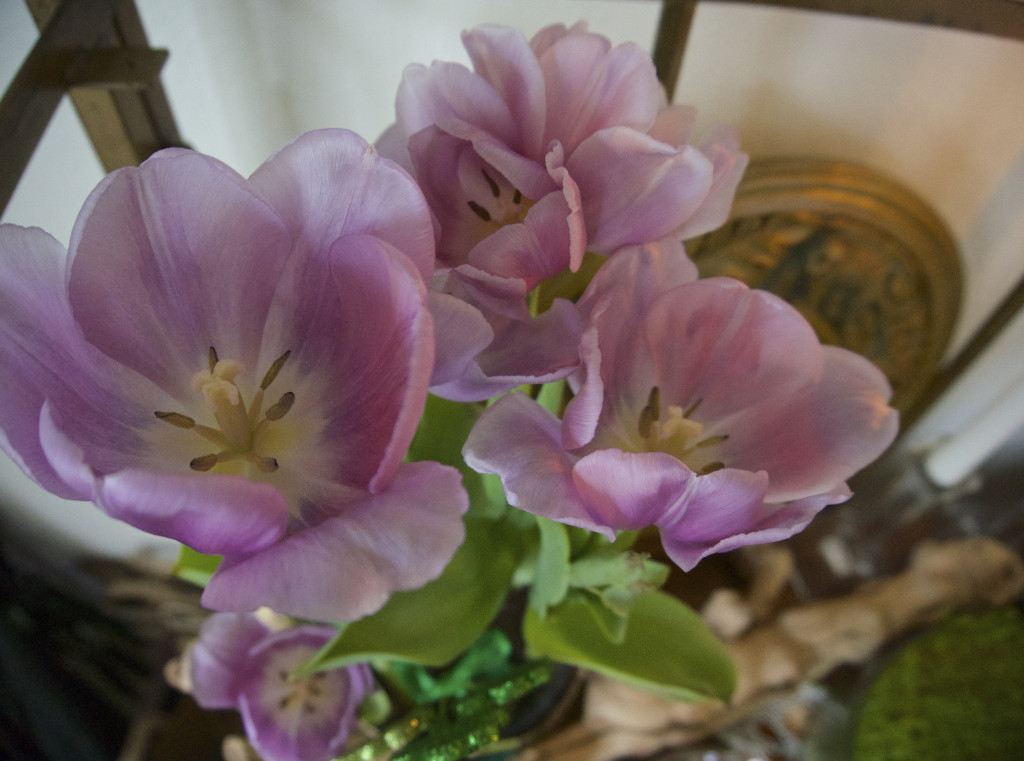
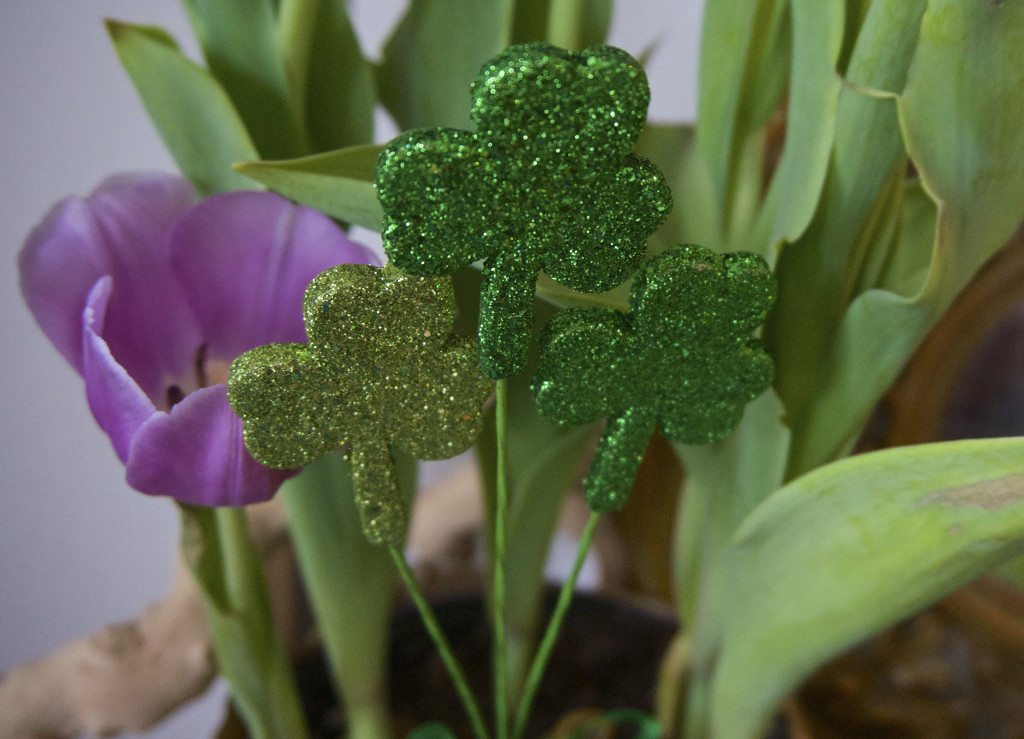
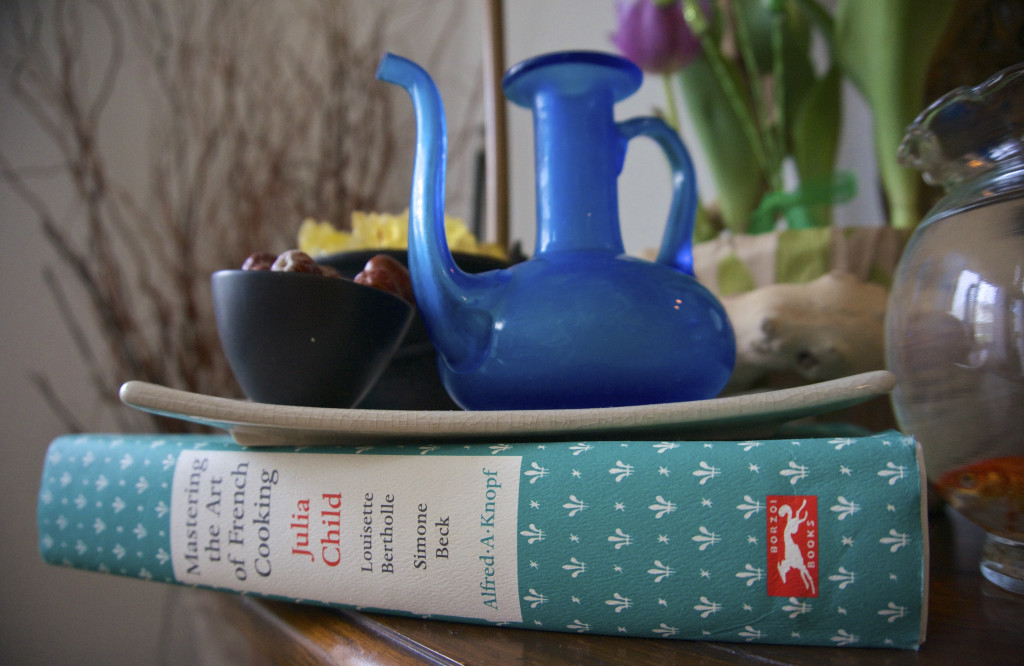
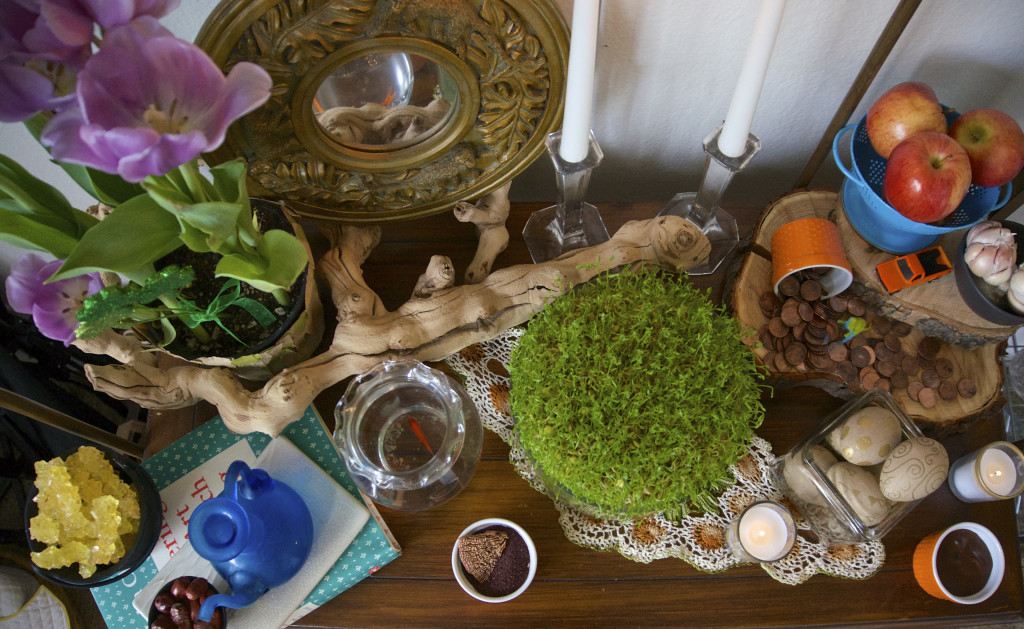
Be the first to comment.